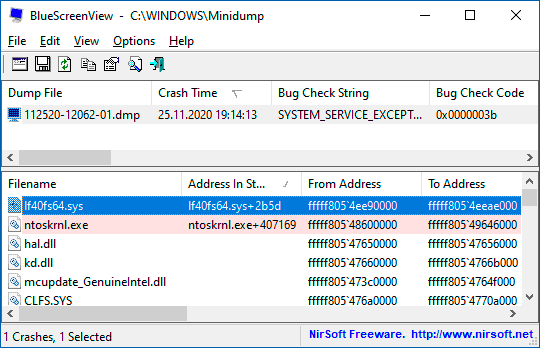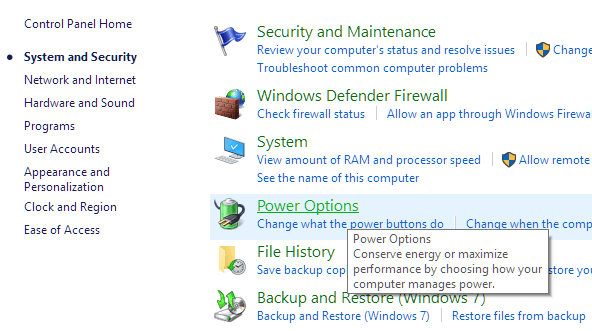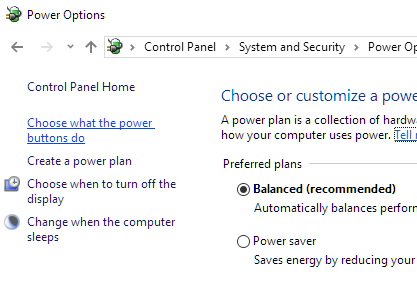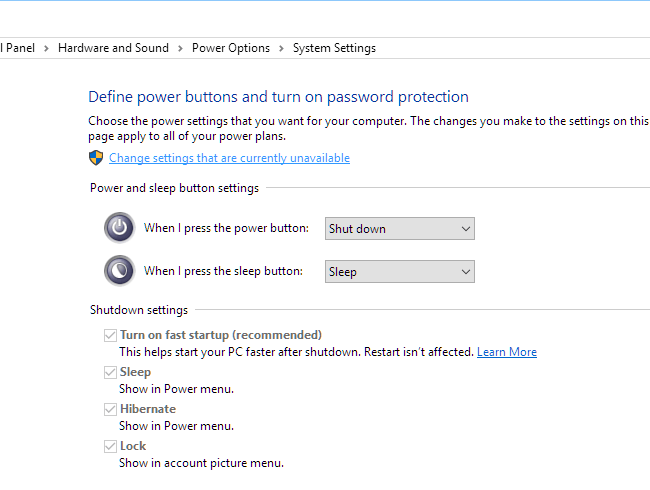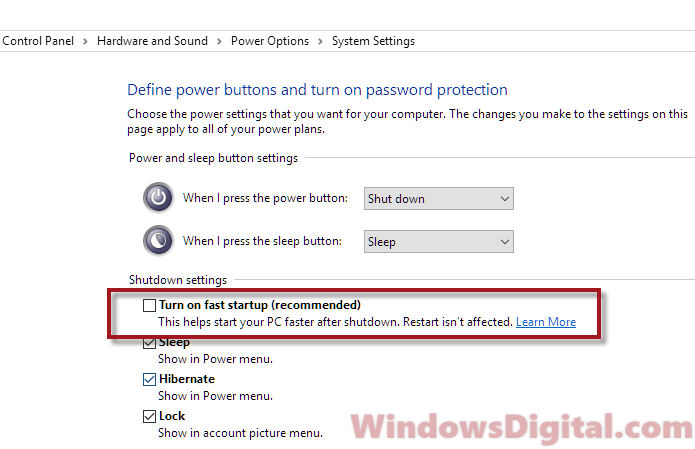Синий экран (BSoD) с кодом KMODE EXCEPTION NOT HANDLED — один из самых сложных в диагностике, особенно в случае, если на экране не сообщается о каких-либо сбойных модулях (.sys), его вызвавших. Однако, попробовать разобраться и решить проблему можно.
В этой инструкции подробно о возможных способах исправить ошибку на синем экране KMODE EXCEPTION NOT HANDLED в Windows 10 в зависимости от ситуации и сопутствующих появлению проблемы нюансов.
- Причины ошибки KMODE EXCEPTION NOT HANDLED
- Исправление в случае, когда возможен вход в Windows 10 или доступен экран входа в систему
- Что делать, если синий экран появляется до появления входа в систему
- Ошибка появляется через некоторое время после чистой установки системы
Причины ошибки KMODE EXCEPTION NOT HANDLED
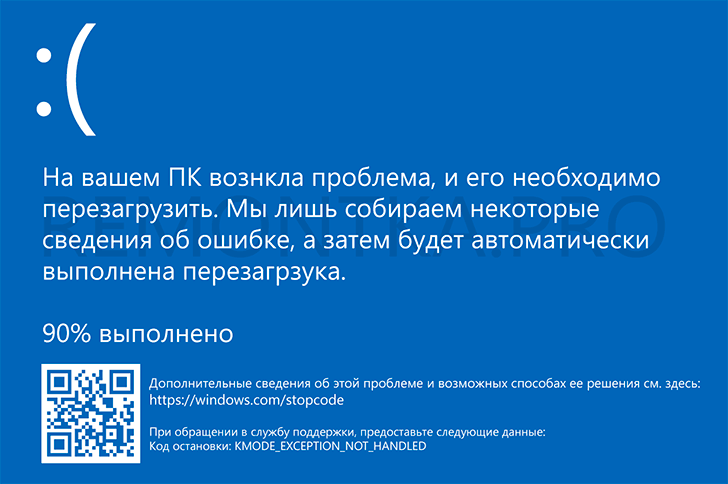
Самая частая причина появления синего экрана KMODE EXCEPTION NOT HANDLED в Windows 10 — сбои драйверов. Но, здесь есть очень важный нюанс: часто речь идёт не о драйвере какого-то физического устройства, а о драйверах, устанавливаемых сторонними программами для своей работы. Среди таких программ можно выделить:
- Антивирусы, средства автоматической очистки системы, файрволлы, средства VPN и прокси.
- Некоторое ПО, модифицирующее систему.
- Программы, устанавливающие драйверы виртуальных устройств (приводов, сетевых адаптеров для раздачи Wi-Fi и подобные).
- Средства криптографии.
Не обязательно дело в них: причина вполне может крыться и в драйвере реального физического устройства, но стоит помнить и о такой возможности.
Ещё одна возможность — какие-либо проблемы с оборудованием, не обязательно его неисправность. К примеру, плохо подключив жесткий диск или SSD (или подключив его неисправным кабелем), также можно получить рассматриваемую ошибку. Поэтому, если вы что-то делали с оборудованием компьютера (или перевозили его с место на место, что тоже иногда ведет к проблемам из-за тряски), учитывайте этот момент.
И ещё одна важная деталь: если синий экран KMODE EXCEPTION NOT HANDLED указывает на какой-либо файл .sys (в скобках после кода ошибки), обязательно попробуйте найти в Интернете, что это за файл и к какому драйверу или программе он относится (поиск на английском обычно более результативен), возможно это даст необходимую информацию о том, что именно вызывает проблему.
Исправление ошибки в случае, когда Windows 10 запускается или отображается экран входа в систему
Внимание: если ошибка появляется после завершения работы Windows 10 и последующего включения компьютера или ноутбука, но не появляется после перезагрузки, попробуйте отключить быстрый запуск Windows 10.
Относительно простой случай — появление ошибки уже после входа в Windows 10 или хотя бы доступность экрана входа в систему, с которого мы тоже можем выполнить некоторые действия. В этой ситуации рекомендую использовать следующие шаги:
- До очередного появления синего экрана перезагрузите компьютер или ноутбук в безопасном режиме. Если система загружается, для этого вы можете нажать клавиши Win+R, ввести msconfig и нажать Enter, после этого на вкладке «Загрузка» включить безопасный режим, сохранить параметры и выполнить перезагрузку. Если вам доступен только экран блокировки, нажмите по изображенной справа внизу кнопке питания, затем, удерживая Shift, нажмите «Перезагрузка». На синем экране перейдите в «Поиск и устранение неисправностей» — «Параметры загрузки», а в параметрах загрузки нажмите клавишу 4 для входа в безопасный режим. Подробнее: Как зайти в безопасный режим Windows 10.
- Если непосредственно перед появлением проблемы вы обновляли какие-то драйверы, откатите их в диспетчере устройств, удалите, или установите другой драйвер в безопасном режиме.
- Если вам известно, какая программа вызвала сбой, удалите её в безопасном режиме (лучше всего через Панель управления — Программы и компоненты).
- Если вам неизвестно, что вызывает сбой, но синий экран появляется через некоторое время после появления рабочего стола: попробуйте убрать все программы (особенно установленные в последнее время) из автозагрузки. Как это сделать: Автозагрузка в Windows 10 — как убрать программы или добавить их.
- Если недавно проблема не появлялась, а что-либо на компьютере не устанавливалось, попробуйте использовать точки восстановления (Панель управления — Восстановление). Подробнее: Точки восстановления Windows 10.
- Если имя сбойного файла .sys не отображается на экране с ошибкой, попробуйте использовать программу BlueScreenView, доступную на сайте https://www.nirsoft.net/utils/blue_screen_view.html. Она может показать подробную информацию о том, что вызвало (какой файл) ошибку. Например, для написания этой статьи я использовал старую программу Lock Folder, так как точно знал, что драйвер из неё может вызвать указанный синий экран в Windows Синий экран я получил (но с другим кодом) и в BlueScreenView видно, что виноват файл lf40fs64.sys — как раз от этой программы.
Если синий экран KMODE EXCEPTION NOT HANDLED появляется до входа в систему
Случай, когда сбой происходит до входа в систему сложнее, но проблему иногда можно решить, не прибегая к переустановке системы:
- Вам потребуется загрузочная флешка Windows 10 в той же разрядности, которая установлена на вашем компьютере или ноутбуке. Сделать её можно и на другом устройстве. Флешку UEFI можно записать даже на телефоне Android.
- Загрузите проблемный компьютер с этой флешки, выберите язык на первом экране, а затем нажмите «Восстановление системы» слева внизу на следующем экране и выберите «Поиск и устранение неисправностей».
- Далее вы можете попробовать использовать точки восстановления системы или удалить последние обновления Windows 10.
- Запустив командную строку в средствах восстановления, вы можете включить безопасный режим для системы, уже установленной на компьютере, используя команду
bcdedit /set {default} safeboot minimalс последующей перезагрузкой компьютера уже с основного HDD или SSD.
Ошибка появляется через некоторое время после чистой установки системы
Если ошибка KMODE EXCEPTION NOT HANDLED появляется всегда через какое-то время после установки/переустановки Windows 10, возможно, причина в том, что система сама загружает драйверы для оборудования и какие-то из них работают неправильно в вашей системе.
Возможное решение для такой ситуации: заранее разместить скачанные вручную драйверы оборудования с официальных сайтов производителя материнской платы ПК или ноутбука, произвести установку без подключения к Интернету, а затем вручную установить заранее подготовленные драйверы. При желании также можно отключить автоматическое обновление драйверов в Windows 10.
В случае, если всё ещё нужна помощь, постарайтесь подробно описать в комментариях все детали, которые вам известны о появлении ошибки на вашем компьютере: после чего стал появляться синий экран, в какие именно моменты он появляется и любые дополнительные детали. Возможно, решение найдётся.
Kmode Exception Not Handled is a Blue Screen of Death (BSOD) error, which generally appears with a bug check value of 0x0000001E. This BSOD error is more likely to occur due to hardware incompatibility, faulty device driver or system service, outdated BIOS, problematic third-party antivirus program, or faulty RAM. Once occurred, irrespective of the reason, this error can make your system restart unexpectedly or not boot at all.
(See Image 1)
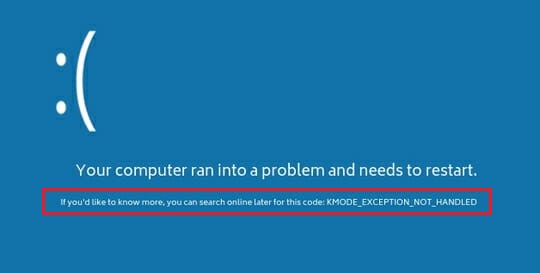
Image 1: KMODE EXCEPTION NOT HANDLED BSOD Error
We’ve come across several queries reported by Windows 10 users about encountering KMODE error with different variations, including:
- KMODE Exception Not Handled Boot Loop
- KMODE Exception Not Handled RAM
- KMODE Exception Not Handled NTFS.Sys
- KMODE Exception_Not_Handled Ntoskrnl.Exe
These stop codes may appear in different circumstances, as mentioned in the queries below.

-Source
“I was using my computer when it showed a blue screen, flashing the Stop Code: ‘KMODE EXCEPTION NOT HANDLED’ and it kept happening again and again. Then I turned off my PC and waited 3 hours before turning it on, it showed a blue screen after loading, but now I can’t log in.”
-Source
“I recently built a new pc. When I try to install Windows 10, it keeps giving me the message – “Sorry your PC ran into some problem – KMODE Exception Not Handled.” Does this mean there is something wrong with my hardware? Kindly help me fix the error.”
–Source
Prime Reasons for ‘KMODE EXCEPTION NOT HANDLED’ Windows 10 Error
The scenarios of KMODE BSOD errors could be different. However, there are a few primary reasons behind this blue screen error, including:
- Hardware incompatibility
- A faulty device driver or system service
- Missing/corrupt system files
- Corrupt third-party antivirus program
- Problematic Windows update
- Outdated BIOS
- Faulty RAM
Now that you know the reason, you can move on to fixing the error. However, you may not be able to boot into your system due to this blue screen error.
So, we suggest you try to boot into the Safe Mode and then perform the below-mentioned troubleshooting methods.
To Boot into Safe Mode, follow the given steps:
- Reboot your system and when you get to see the Windows logo on the screen, turn your system again.
- Repeat this step three times, and then you’ll most probably enter the Automatic Repair environment.
- There, click ‘Advanced options’. (See Image 2)
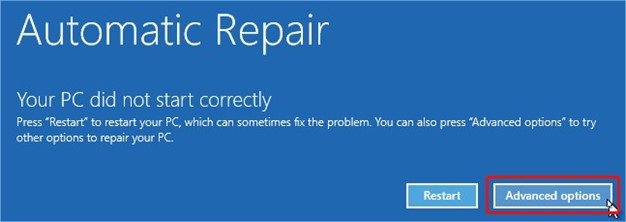
Image 2: In the Automatic Repair environment, select Advanced options
- Follow Troubleshoot > Startup Settings > Restart.
- Once the system gets restarted, press F4 to enable the Safe Mode. (See Image 3)
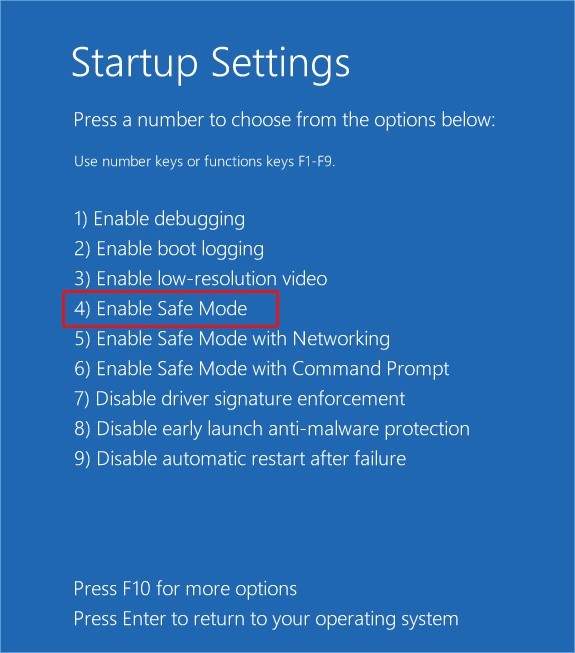
Image 3: Enable Safe Mode by pressing F4
Simple Methods to Fix KMODE_EXCEPTION_NOT_HANDLED Error
Method 1: Disable Fast Startup
Fast Startup is a feature in Windows 10, which helps to reduce your system’s boot time. It may also prevent your system from executing a regular shutdown and create compatibility problems with the connected hardware devices. Disabling this feature may help you boot your system normally and fix the issue. To do so, follow the given instructions:
- Open Control Panel and change View by to ‘Large icons. (See Image 4)
Image 4: Change View by to Large icons in the Control Panel
- Go to Power Options. (See Image 5)
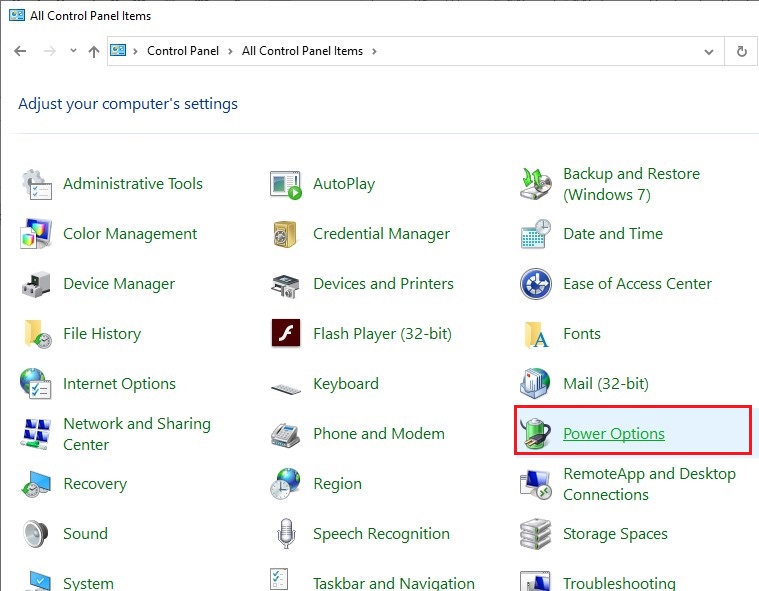
Image 6: Navigate to Power Options
- Next, click on ‘Change what the power buttons do. (See Images 7)
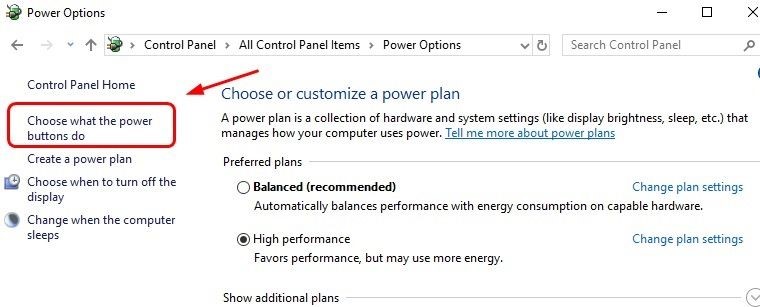
Image 7: Change what power button does
- On the next screen, deselect ‘Turn on fast startup (recommended)’ and click Save Changes. (See Image
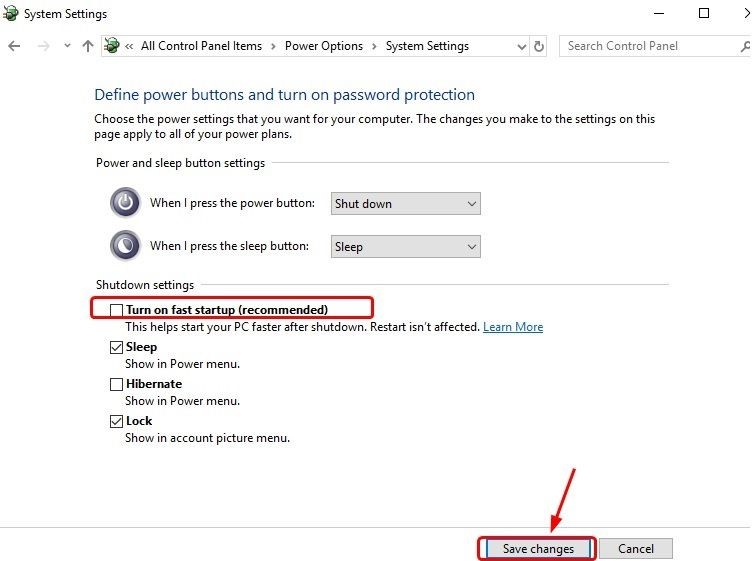
Image 8: Deselect Turn on fast startup (recommended) > Save changes
- Now, check if the error is fixed.
Method 2: Run BSOD Troubleshooter
If there’s faulty or corrupt hardware installed on your system, you may encounter the ‘KMODE EXCEPTION NOT HANDLED’ error on Windows 10. To resolve this error, you can also run the BSOD troubleshooter, Windows built-in troubleshooting utility. Follow the given steps:
- Open System Settings by pressing Windows + I and navigate to Update & Security. (See Image 9)
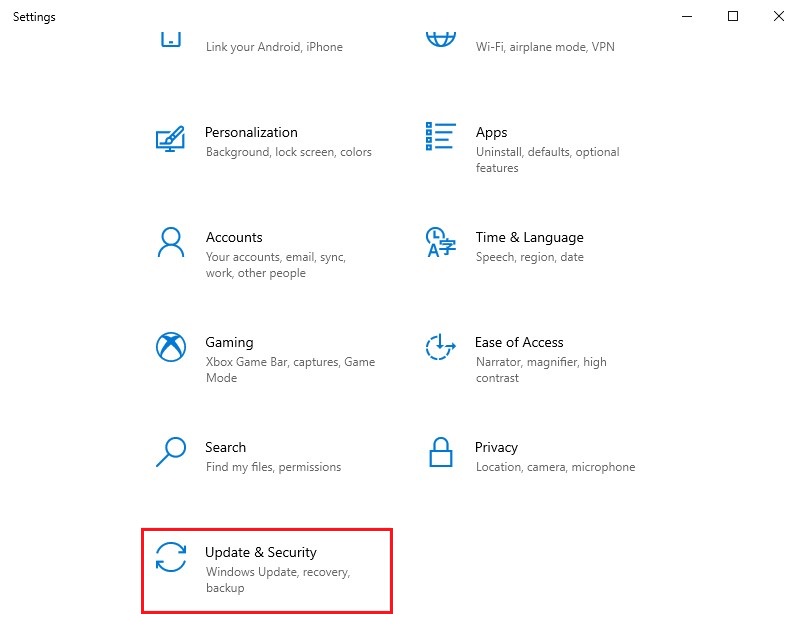
Image 9: Select Update & Security in System Setting
- Click Troubleshoot > Find and fix other problems > Run the troubleshooter (mentioned below Blue Screen). (See Image 10)
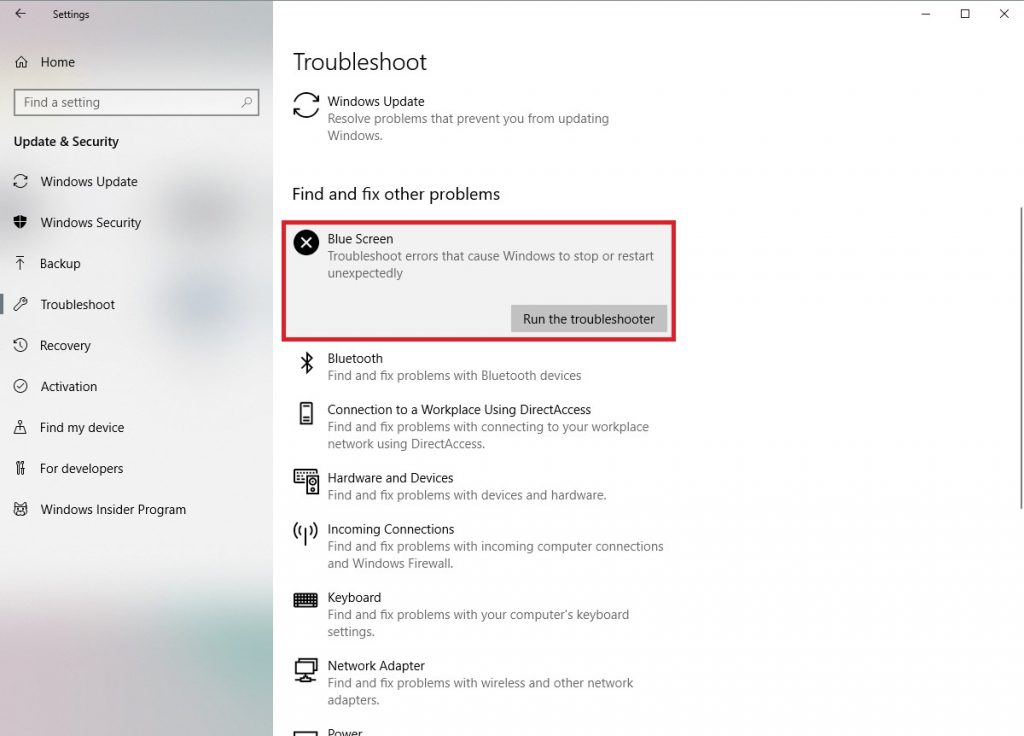
Image 11: Run the BSOD Troubleshooter
- Follow the on-screen instructions (if any). Let the process end, close the window, and restart your system to check if the problem is solved.
Method 3: Update the Device Driver
Incompatible, outdated, or corrupt device drivers may also cause this error to occur. You can try updating the device driver to get rid of this blue screen error. Follow the given instructions:
- Type Device Manager in the Windows search box and open it.
- Expand the device category for which you want to update the driver.
- Right-click on the device driver and click Update driver. (See Image 12)
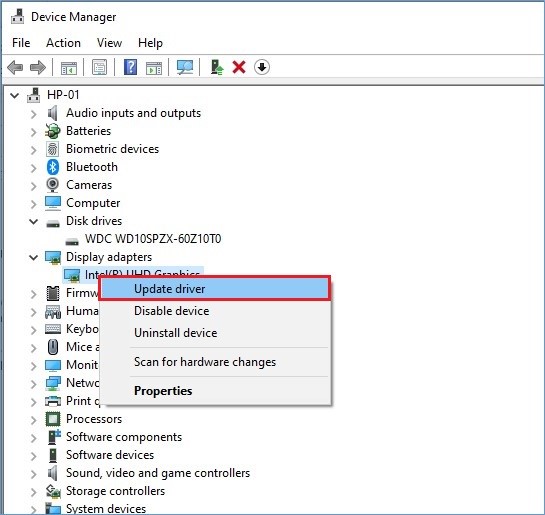
Image 13: Select the driver to update
- In the following Update Drivers wizard, click ‘Search automatically for drivers.’ (See Image 14)
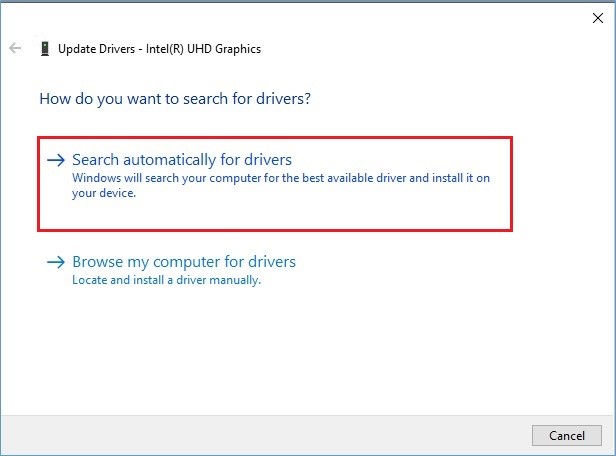
Image 14: Search automatically for drivers
- Windows will start showing you the latest driver to install. Update driver with the latest ones and check if the error is fixed.
- In case Windows doesn’t seem to show you any latest driver software available, proceed with the ‘Search for updated drivers on Windows Update’ option. (See Image 15)
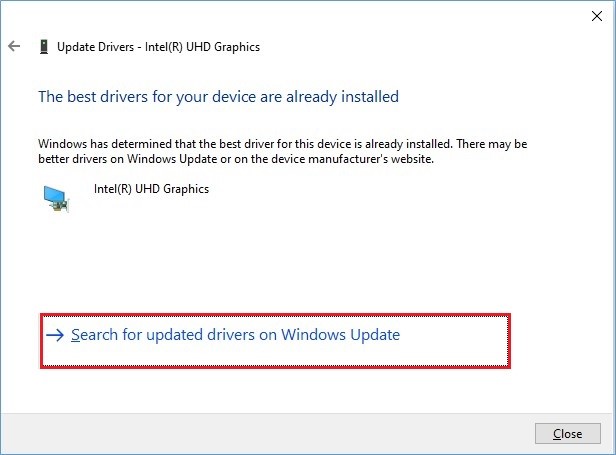
Image 15: Search for updated drivers on Windows Update
- Afterward, you’ll see the available updates on the screen. Click Install Now to install the latest driver software on your system. (See Image 16)
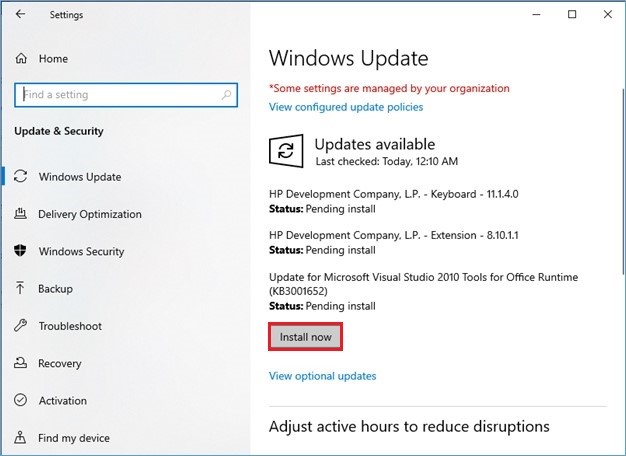
Image 16: Install the latest driver software
- Once done, restart your system and check if the KMODE_EXCEPTION_NOT_HANDLED error is solved.
Method 4: Run DISM & SFC Scan to repair system files
As discussed above, the corrupt or missing system files or services may also be the reason behind this error, which could further lead your system to a complete crash.
To prevent any further damage to your system, you may run DISM and System File Checker to check for the problems with system files and fix the problem. To do so, follow the given steps:
- Open Command Prompt and run it as administrator.
- Next, type DISM.exe /Online /Cleanup-image /Restorehealth and press Enter. (See image 17)
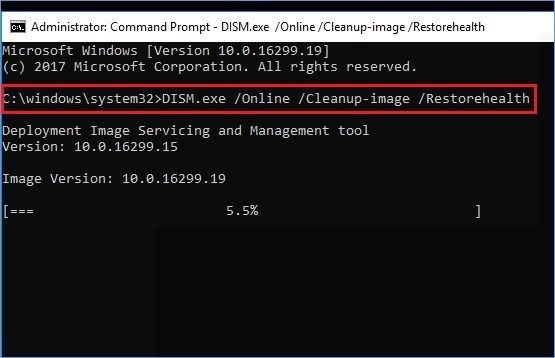
Image 17: Run DISM Restore health command
- Afterward, type SFC/scannow and hit Enter. (See Image 18)
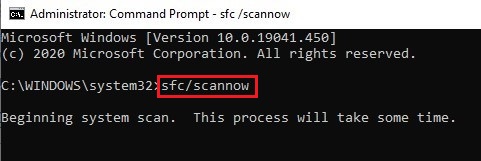
Image 18: Run SFC/Scannow command
- Let the process end. It may take some time, so don’t close the window until its done.
- Follow the instructions given on the screens (if any). Once done, reboot your system and see if the error is fixed.
Method 5: Uninstall third-party antivirus software
Malicious or corrupt third-party antivirus software installed on your system may cause this blue screen of death error (BSOD) on your Windows PC. You can try uninstalling the antivirus software to get rid of the error. To do so, follow the given steps:
- Press Windows + I to open System Settings and go to Apps.
- Then, navigate to Apps & features and select the third-party antivirus software installed, which seems to be causing the error.
- Right-click on the antivirus and choose to Uninstall it. (See Image 19)
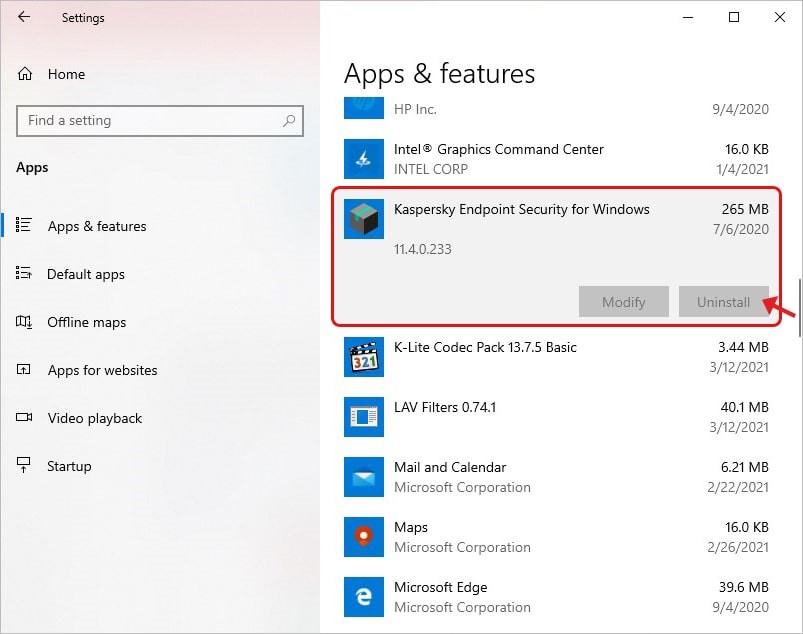
Image 19: Select the software to Uninstall
- Once done, reboot your system, and try to upgrade to Windows 10.
Method 6: Uninstall Problematic Windows Update
Some users even reported getting KMODE BSOD error after Windows 10 update. There could be some buggy Windows update installed on your system, causing a problem for your system. In such a case, you can uninstall the update to solve the issue.
- Go to System Settings, navigate to Update & Security and then select View update history. (See Image 20)
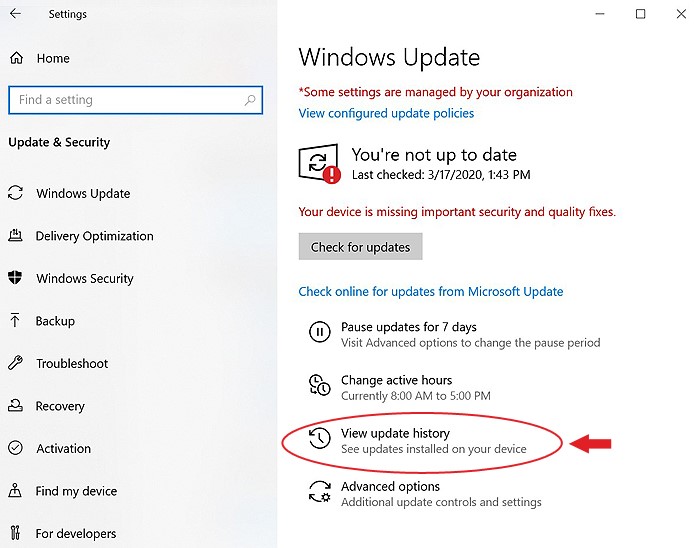
Image 20: Open System Settings and go to Update & Security > View update history
- On the next window, find the recently installed update and click Uninstall updates.
- Right-click on the Windows update and click Uninstall. (See Image 21)
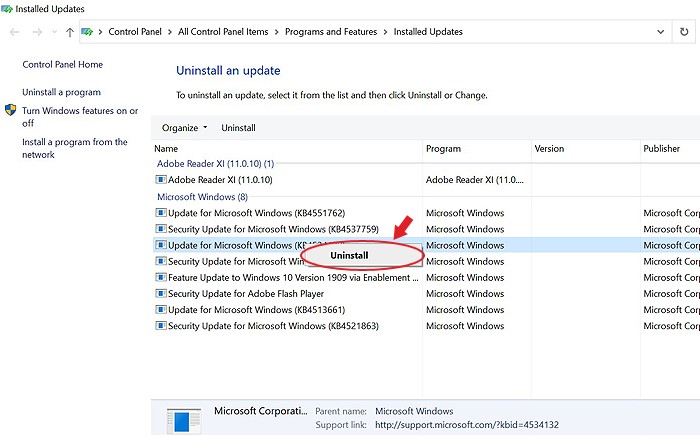
Image 21: Right-click the update to uninstall
- Once done, restart your system to check if the KMODE EXCEPTION NOT HANDLED error persists.
Method 7: Run Windows Memory Diagnostics
Some people reported that this error occurred due to a faulty RAM. To verify if there is RAM causing this BSOD error on your Windows 10, you may run the Windows Memory Diagnostics tool with the help of the steps given below:
- Type ‘memory diagnostic’ in the Windows search box to open Windows Memory Diagnostic. (See Image 23)
Image 23: Open Windows Memory Diagnostic using Windows search box
- Next, select ‘Restart now and cart now and check for problems (recommended).’ (See Image 24)
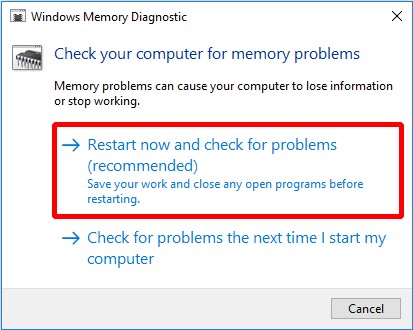
Image 24: Select Restart now and check for problems (recommended)
- A test to check the problems with RAM will start. Wait until the process is done; you will be able to see the results on the screen.
- Wait for the process to end. Once the search is completed, the computer will show all the detected problems on the screen.
Method 8: Update BIOS
In some cases, KMODE_Exception_Not_Handled error can occur due to an outdated version of BIOS on your Windows 10 PC. You can visit the official site of your system’s motherboard manufacturer to download the latest BIOS version. Follow the instructions given on the site to update BIOS.
Remember, updating BIOS is an advanced process. If the steps are not followed correctly, it can cause enduring damage to your system, and you may lose all of your data permanently.
Hence, it’s always suggested to take the backup of your data regularly. However, if you didn’t have the chance to back up your system data, you still have the chance to get back your system data.
You can use powerful Windows data recovery software, such as Stellar Data Recovery Professional. This DIY software also comes with a feature called ‘Create a recovery drive,’ enabling you to build a bootable recovery media that lets you restore data from a crashed or unbootable Windows 10 PC. You can check out the given video to learn more:
Final Thoughts
KMODE EXCEPTION NOT HANDLED error can lead your system to malfunction, crash, or even stuck at a booting loop. This error may appear with different stop codes, as explained in this blog. Irrespective of the reason, you can fix the error with effective methods, such as disabling fast startups, running BSOD troubleshooter, running SFC, uninstalling outdated/corrupt device drivers, etc. Additionally, to recover data from this BSOD affected system, you can use a Windows data recovery software, such as Stellar Data Recovery Professional. This DIY data recovery tool can retrieve data even from a non-bootable or crashed Windows 10 PC.
Was this article helpful?
YES1
NO
If you’re a Windows user, you may have encountered the dreaded Blue Screen of Death (BSOD) error at least once. One of the most common BSOD errors is the “KMODE_EXCEPTION_NOT_HANDLED” STOP error, which can occur in Windows 10 or 11, particularly after a Windows update or fresh installation.
In this guide, we’ll explain what the “KMode Exception Not Handled” error means and provide you with effective solutions to fix it.
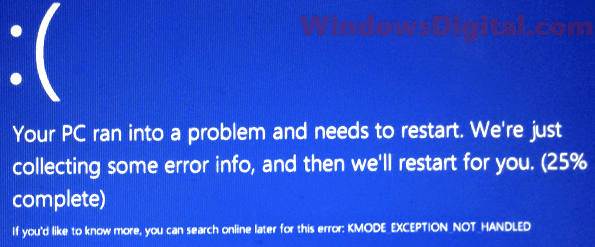
What is KMODE_EXCEPTION_NOT_HANDLED BSOD?
In most cases, the KMODE_EXCEPTION_NOT_HANDLED blue screen error is a result of conflicts in memory overwriting between programs and Windows when they run in Kernel mode. Thus, the STOP code can be caused by invalid, corrupted, or missing Windows system files, registry, and drivers. An incorrectly installed software or faulty hardware, such as RAM or HDD, could also be the reason why the blue screen error appears.
Some users also reported that the KMODE_EXCEPTION_NOT_HANDLED error may occur in Windows 11 or 10 and may be caused by a driver file called “ntfs.sys“. Some also reported that the error could be caused by overclocking of hardware. Since the reasons that can cause this specific blue screen error are vast, it can become very complicated when troubleshooting the error. However, we’ve sorted out the most common causes of this error and have listed the most working solutions below.
Related issue: How to Fix Blue Screen With Sad Face on Windows 10 or 11 PC
Disable Fast Startup
In most cases, the STOP code KMODE_EXCEPTION_NOT_HANDLED error in Windows 11 or 10 can be caused by a boot option called Fast Startup when it’s enabled in Windows. Disabling it should fix the issue. Here’s how to do so:
- Go to start menu or Cortana.
- Search for and open Control Panel.
- Click on System and Security.
- Then, click on Power Options.
- From the left pane, click on Choose what the power buttons do.
- On the right, click Change settings that are currently unavailable to unlock the Shutdown settings.
- Uncheck Turn on fast startup option to disable fast startup.
- Restart your computer.
If you can’t boot into Windows to perform the changes in the first place, read: How to enter Safe Mode in Windows 11/10 from BIOS.
Update your hardware drivers
If you have a problem trying to make changes in Windows before the blue screen kicks in, or you can’t even boot into Windows due to the blue screen error, go to the link shown above to force your PC to enter safe mode without logging in.
Then, in Safe Mode, go to the Start menu. Search for and open “Device Manager“. In Device Manager, click on View from the menu, then click “Show hidden devices“. This is to ensure every connected hardware is shown on the list.
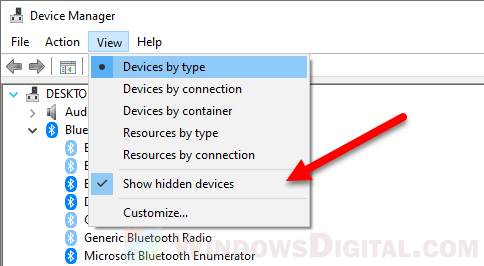
From the list, look for devices with a yellow exclamation mark beside it, usually named “Unknown device“, under “Other devices” category. Right-click these devices and then select “Update driver software” to allow Windows to update the driver automatically.
Since the BSOD error directly relates to drivers of your connected hardware, updating these missing or corrupted drivers may help fix the issue.
Remove recently installed programs
If the methods above fail to resolve your issue, try to recall what program or software you’ve recently installed right before the error started to occur. Try to uninstall these programs and see if it fixes the error.
The KMODE_EXCEPTION_NOT_HANDLED error also implies that there could be conflicts between Windows and installed programs when handling memory used. If a program is incompatible with how Windows works, it may indirectly cause the BSOD error.
By removing the recently installed program, you may resolve the issue. You can uninstall the program by going to “Programs and Features” in the Control Panel on Windows 10 or the “Apps & features” in Settings on Windows 11, and selecting the program you want to remove.
KMODE EXCEPTION NOT HANDLED is one of the most dangerous BSOD errors on Windows 10 and older versions, because it usually leads to total system failure. On top of that, it might be difficult to determine the root of the problem for troubleshooting.
If you stumble upon this error only once and get it fixed by rebooting your PC, it’s not really an issue. It becomes problematic when you must face KMODE_EXCEPTION_NOT_HANDLED every time you launch Windows and try to work or play.
What causes the KMODE EXCEPTION NOT HANDLED stop code?
The stop code can be caused by various issues at the software level, hardware level, or both. For instance, installed programs could overwrite each other’s memory, resulting in conflicts, corrupt applications, system stability issues, and ultimately a full Windows crash.
If the processor’s kernel mode throws an exception error that can’t be identified by the error handler, this can lead to KMODE_EXCEPTION_NOT_HANDLED with 0x0000001E error code.
Sometimes, the stop code is accompanied by a filename, which makes troubleshooting a lot easier since you can look up more information about the file on the Internet.
How to fix KMODE_EXCEPTION_NOT_HANDLED
There are multiple ways to repair a Blue Screen or Death message with the KMODE EXCEPTION NOT HANDLED BSOD error code, depending on its cause: software or hardware.
Since it’s hard to evaluate this, you should start with software solutions and work your way up to hardware fixes. It’s simpler that way.
Some of the following workarounds are suitable for casual users. However, we can’t overlook more elaborate solutions, so we reserved the last part for skilled individuals.
Before getting started, we strongly recommend you create a system restore point. It will spare you from headaches in case you make a wrong move and must undo all changes. Better yet, create a full system backup if you can.
Certain users don’t even get the chance to do something on their computer due to the KMODE_EXCEPTION_NOT_HANDLED error that sends their operating system into a restart loop. If you’re one of them, you can boot Windows in safe mode to load only the required drivers.
1. Disable Fast Startup
Fast Startup is a feature introduced in Windows 8 and migrated to Windows 10. It allows the operating system to boot, shut down, and wake up from hibernation faster because it doesn’t entirely turn off all processes, services, and drivers.
If the KMODE EXCEPTION NOT HANDLED BSOD stop code is caused by faulty drivers, then you should deactivate Fast Startup to prevent it from reloading all drivers while doing its job.
Here’s how to disable Fast Startup on Windows 10:
- Make sure you’re logged in as the administrator
- Press Win key + R, type control panel, and hit Enter
- Find and click Power Options
- Click Choose what the power buttons do on the left side
- Click Change settings that are currently unavailable
- Disable Turn on fast startup (recommended) and click Save changes
- Reboot your computer
In certain cases, switching off Fast Startup is enough to fix the KMODE_EXCEPTION_NOT_HANDLED stop code. It should at least give you more time working on other solutions before Windows receives the BSOD message again.
2. Turn off startup programs
Startup programs are the ones that get launched automatically as soon as you boot Windows. You might have noticed that some applications do this as soon as you install them on your PC.
Having too many startup apps results in a slower boot time. If one of those programs overwrites the memory of another, it can lead to KMODE EXCEPTION NOT HANDLED.
You can fix this by disabling startup apps:
- Right-click the Windows 10 taskbar and select Task Manager
- Go to the Startup tab
- If you have numerous entries here, click Status to sort the apps (Enabled first)
- Right-click each entry with the Enabled status and select Disabled
- Restart your computer
To conduct more research on startup programs, you can download Microsoft’s Autoruns utility from the official website. It shows the registry entry of each startup process and can check it for malware almost instantly by uploading its hash to VirusTotal.
Find out more information about turning off startup programs on Windows 10.
3. Uninstall recent applications
If you have recently installed software programs and began experiencing the KMODE EXCEPTION NOT HANDLED error right afterward, they could be the reason behind your troubles.
However, you should be able to fix this problem by removing the applications from your computer. For example, it has been reported that ON/OFF Gigabyte triggers the BSOD error, along with certain VPN services and antivirus tools.
Here’s how to remove recent programs:
- Right-click the Windows 10 Start menu and select Apps and Features
- Set Sort by to Install date to list your apps by date (newest first)
- Pick the first program. If you wish to eliminate any uncertainty, you can run a quick Google search to see if that application has caused troubles to other users, too. Then, click Uninstall and proceed with the removal process
- Restart your computer to see if you still get the KMODE_EXCEPTION_NOT_HANDLED error
4. Restore Windows to a previous checkpoint
The easiest way to undo the damage caused by a bad driver or corrupt process is by using System Recovery. It’s not a reliable method, though, because it sometimes doesn’t work at all. But you can still give it a shot.
- Press Win key + R, type control panel, and hit Enter
- Click Recovery
- Click Open System Restore
- Choose a checkpoint from the list, click Next, and follow the on-screen instructions.
5. Run a malware scan
A malware infection can do heavy damage on your operating system, even triggering BSOD errors like KMODE_EXCEPTION_NOT_HANDLED by overwriting data. So it’s a good idea to run a malware scan and clear your computer of any pests.
If you’re running Windows 10 and don’t have a third-party antivirus solution installed, then you have to use Windows Defender.
- Click the Windows 10 Start button, type Windows Security, and launch this app
- Select Virus & threat protection
- Click Scan options
- Select Quick scan and press Scan now
- If no malware results show up, run another scan using the Windows Defender Offline scan mode
6. Disable your antivirus software
Your anti-malware application may affect other running programs which are essential for Windows. This could also lead to the KMODE_EXCEPTION_NOT_HANDLED error code.
To fix this problem, you just have to deactivate your antivirus program. It’s usually impossible to end its process from Task Manager or exit the application due to security reasons.
However, you should be able to turn off the real-time detection engine. In the worst case scenario that you can’t do that, then simply uninstall the antivirus program.
7. Check your drivers
Obsolete, incompatible, missing, or faulty drivers are usually the cause of the KMODE EXCEPTION NOT HANDLED stop code. That’s why it’s essential to check if they are running properly. It’s a multi-part process.
Here’s how to reinstall drivers easily:
- Right-click the Windows 10 Start button and pick Device Manager
- Right-click a device from the list and select Uninstall device
- Reboot your PC. The driver will be automatically reinstalled by Windows
The method above is the equivalent of getting Windows to work properly by turning it off and on again. But it doesn’t always do the trick.
It’s possible that your drivers are outdated. You can try updating them by asking Windows to search for updated driver software automatically. Unfortunately, this method often fails.
As an alternative solution, you can look up the drivers on your manufacturer’s website. DriverVerifier is an excellent tool that can help you identify the drivers of your machine. You have to be careful, though, since there’s the risk of accidentally installing an incompatible driver.
A safer solution is to use a driver updating application. It can automatically detect the old drivers on your PC, find newer versions on the Internet, then quickly download and install them on your machine, ensuring driver compatibility.
8. Free up disk space
Numerous computer problems are caused by insufficient disk space. Windows always needs room to carry out tasks, execute commands, and ensure that all programs are functioning correctly.
Have a look at the Properties panel of your partition where your OS is installed (it’s usually C:). If there’s only a small percent of free disk space available, it’s time to get more.
Copy files to another partition or an external storage device, upload them to the cloud, or simply delete the ones you don’t need anymore.
You can also use the Windows Disk Cleanup utility:
- Make sure you’re logged in with elevation rights
- Review your Recycle Bin and Downloads folder to copy any critical files you might need
- Open the Properties panel of the Windows drive (by default, it’s C:)
- Go to the General tab and click the Disk Cleanup button
- Select everything from the list and click Clean up system files
- Windows will run a scan. Once it finishes, select everything again, click OK and then Delete Files
9. Check your RAM
A faulty memory could result in a fatal hardware issue by triggering BSOD errors and driver corruption. However, you can easily fix it using the memory diagnostics program integrated into Windows.
- Save any ongoing projects and close all applications
- Click the Start menu, search for Windows Memory Diagnostic, and launch this app
- Click Restart now and check for problems
The tool will check your operating system for RAM issues during the next reboot and provide you with all the necessary details.
If you’re looking for a more advanced tool, check out MemTest.
10. Run a clean boot
To prevent Windows from running any extra drivers, processes and services at startup that would cause the KMODE EXCEPTION NOT HANDLED error, you can run a clean boot.
- Click the Start menu, type System Configuration, and open this app
- Pick the Services tab, deselect Hide all Microsoft services, and click Disable all
- Visit the Startup tab and click Open Task Manager
- Terminate all currently active tasks
- Reboot your computer
11. Use Event Viewer
You can launch Event Viewer, the operating system’s own diagnostics utility, to find out more information about the BSOD error, including its triggering processes or services.
- Once your computer gets restarted after receiving the KMODE EXCEPTION NOT HANDLED stop code, immediately open the Start menu, type event viewer, and hit Enter
- In the Windows Logs folder on the left, select System
- Click the first (newest) Error you spot on the list and use the General tab to obtain more information about it
12. Fix system errors from CMD
You don’t really need to have any special skills in order to work with Command Prompt since you can copy and paste the commands below.
However, make sure to create a system restore point before proceeding. Furthermore, you should save any ongoing projects and close all applications.
Here’s how to run CHKDSK (Check Disk):
- Press Win key + R, type cmd, then press Ctrl + Shift + Enter to open Command Prompt with elevation rights
- If your OS resides in Local Drive C:, then type
chkdsk c: /f. Otherwise, replacec:with the correct letter of your partition - You will be asked to agree with scheduling the disk checkup at the next system reboot. Type y and press Enter
- Restart your computer and wait until CHKDSK does its job
You can count on the Check Disk utility to fix any corruption at the hard disk level, which should help handle the KMODE EXCEPTION NOT HANDLED error, too. But, if it doesn’t, proceed to the next step.
Here’s how to run SFC (System File Checker):
- Launch as admin
- Type
sfc /scannowand press Enter - Wait until the scan and repair is complete
- Restart your computer
System File Checker is designed to fix corrupt system files, making it a great solution for troubleshooting BSOD issues. It this tool doesn’t work either, try the next one:
Here’s how to run DISM (Deployment Image Servicing and Management):
-
- Open Command Prompt as admin
- Write
DISM /online /cleanup-image /scanhealthand press Enter - If there are any errors, type
DISM /online /cleanup-image /restorehealth - Restart your computer, launch CMD as admin, write
sfc /scannowand press Enter - Reboot your machine again
DISM checks for corrupt files in the component store of the Windows image, which CHKDSK and SFC can’t reach. It’s a good way to get rid of the KMODE EXCEPTION NOT HANDLED problem.
13. Update your BIOS
- Find out your current BIOS version
- Click the Start button, type System information, and launch this app
- Copy your BIOS Version/Date
- Visit the manufacturer website of your BIOS model to download the latest BIOS version
- Unzip the downloaded BIOS file and copy it to a USB flash drive
- Plug the flash drive into your PC, reboot, and enter BIOS by pressing the key or key combination displayed on your screen
- Locate the BIOS update tool and create a backup of your current firmware
- Load the newest BIOS version in the firmware updating utility and proceed with its installation
- Wait until the update is complete, and then you can reboot your PC
14. Remove and reseat all hardware parts
If your hardware components aren’t properly connected to the computer, it could result in fatal system errors like KMODE EXCEPTION NOT HANDLED. To solve this, you have to remove and reseat all cards and cables.
Pay special attention to the BIOS, GPU and RAM cards. You should also check hardware compatibility to make sure the pieces work well together as well as with your Windows version.
Conclusion
To sum up, you should be able to fix the KMODE EXCEPTION NOT HANDLED error by turning off the Windows 10 Fast Startup, disabling startup programs, and uninstalling recent applications with compatibility issues.
You could also restore Windows to a previous checkpoint, run a malware scan, disable your antivirus software, check your drivers, and free up disk space.
If that doesn’t work either, make sure to check your RAM, run a clean system boot and use Event Viewer to get more details about the error.
It’s also advisable to fix system corruption issues from the Command Prompt, update your BIOS to the latest version, as well as to remove and reseat all hardware parts.
Did these solutions work for you? Did we miss any important steps? Let us know in the comment section below.

The KMODE_EXCEPTION_NOT_HANDLED error is a common bluescreen error that usually occurs because of a faulty driver. In some cases, users can also get stuck in a boot loop. Simply put, the Kmode Exception not handled error is the result of memory-related conflicts between two or more applications.
So, read on to find out to fix the Kmode Exception not handled error once and for all.
1. Disable Fast Startup and Clean Boot Your Computer
By default, fast startup is enabled in almost all Windows 10 machines. The feature allows your computer to boot faster or quickly recuperate from hibernation, but can also result in Windows 10 not properly booting or loading back into previous errors.
The first thing users should do is disable fast startup, followed by a clean boot:
Disable Fast Start-Up
- Right-click on the Start button and click on Power Options.
- In the window that opens, click on Additional power settings.
- In the menu on the left side, click on Choose what power buttons do.
- Navigate to Shutdown settings and uncheck the Turn on fast startup box.
- Save changes and exit.
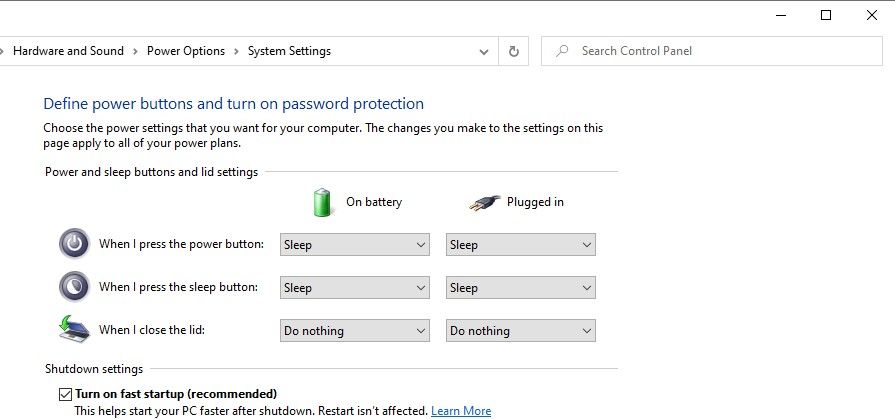
How to Clean Boot Windows 10
Clean boot disables all third-party software in Windows. It’s used to diagnose a lot of common issues that Windows users face.
- In the Start menu search bar, type msconfig and select System Configuration in the search results.
- Navigate to the Services tab in the window.
- Check the Hide all Microsoft services box.
- Check all the services and click on Disable all.
- Now, open Task Manager and go to the Startup tab.
- Select all the services one by one and click on the Disable button on the lower right.
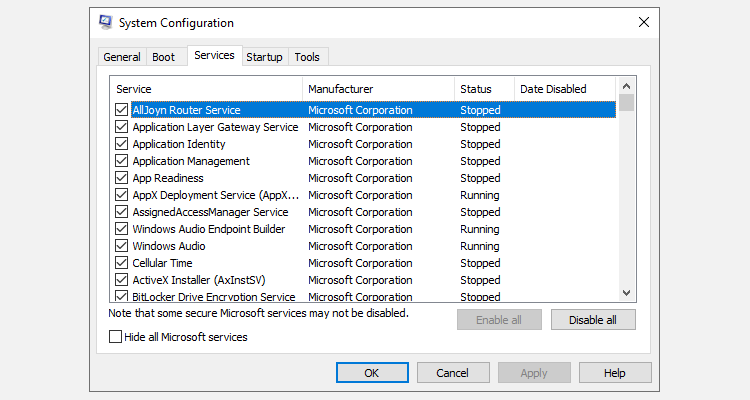
Now it’s time to reboot your computer and check if the error persists. If the error is resolved, it means that the bluescreen of death error was being caused by interference from third-party software.
2. Network Drivers May Be Outdated
A common reason for the Kmode Exception not handled BSOD is outdated network drivers. Here’s how you update your device’s network drivers:
- Press Windows Key + R and type devmgmt.msc. The Device Manager window will open.
- Look for Network adapters and expand them using the drop-down arrow.
- Right-click on your Ethernet and wireless drivers and select Update driver.
- Subsequently, click on Search automatically for updated driver software.
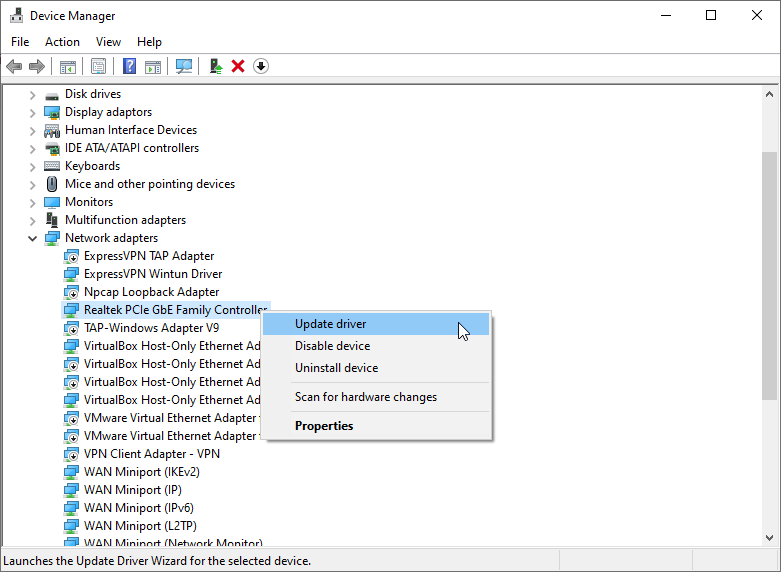
After this, Windows will automatically download and install the required network drivers. Users can also find more detailed information on how to find and replace outdated Windows drivers.
3. Diagnosing Memory Issues
As mentioned in the introduction, the error is usually the result of memory issues in your computer. Thankfully, Windows has an in-built utility that can help resolve a huge array of memory-related problems. To use it, just follow these steps:
- In the Start menu search bar, type Windows Memory Diagnostic and select the Best Match.
- Users can either instantly restart their PC and begin the diagnostics process or do it when the computer reboots next.
It’s recommended that users choose the first option and restart their computer.
4. Disable Your Antivirus Software
Antivirus software is notorious for deleting or quarantining essential system files. This can also happen when installing new drivers or updating existing ones. That’s why it’s recommended that users temporarily disable their antivirus when installing new software(downloaded from a trusted site) or drivers.
To disable your antivirus software, find its respective icon near the notification bar on the right side of the taskbar. Right-click on it and click on disable. The process may vary in different antivirus programs, so check the user manual on how to do the same.
Sometimes, the in-built Windows Security may also falsely flag safe programs and files. To disable Windows Security, follow these steps:
- Type Windows Security in the Start menu search bar and click on the first result.
- In the dashboard, click on Virus and threat protection.
- Click on Manage settings and switch-off Real-time protection.
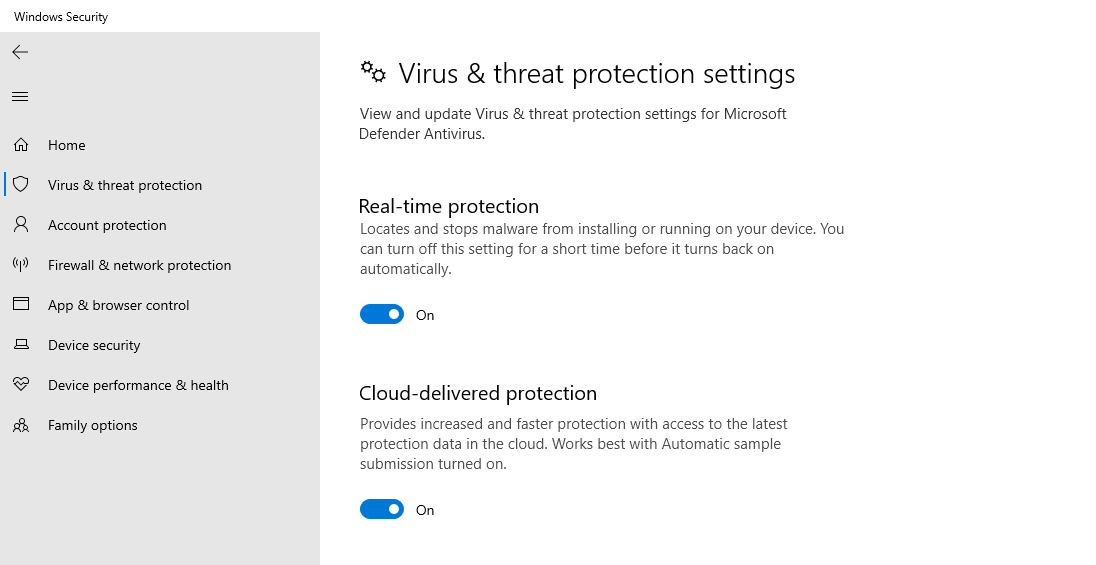
Please note that this is a temporary switch off. As soon as the program or driver finishes installing, switch your antivirus program back on.
5. Remove External Hardware
When booting your computer, make sure that all external hardware is disconnected. This includes your keyboard, mouse, storage devices, and video game controllers. Check for any hiccups while booting or re-appearance of the error after booting.
If the computer works smoothly, it means that the drivers related to those external devices were not installed properly.
6. Free Up Storage Space
The Kmode Exception not handled error could also be the result of a full hard drive.
Microsoft recommends users leave an ample amount of space in the C:\ drive as it contains system files. A full C:\ drive may cause a plethora of problems, specifically when downloading and installing a Windows update.
Delete any unwanted or unused files, uninstall obsolete software, and install video games in other partitions. It might not be a bad idea to use cloud storage for storing your files if you frequently run out of space. Alternatively, you could upgrade your existing storage for a larger drive.
7. Update the BIOS and Its Settings
Rarely, the kmode exception not handled error can be caused due to outdated BIOS software. To update your BIOS, go to the motherboard manufacturer’s website and navigate to the downloads section. Select the appropriate motherboard, then download and install the latest BIOS.
Alternatively, check out our guide on how to update your UEFI BIOS in Windows.
If your BIOS has options to enable or disable caching and shadowing, make sure that both these options are disabled. Newer systems do not have these settings, but it’s important to rule these out.
Kmode Exception Not Handled Error Resolved
The aforementioned techniques will resolve the kmode_exception_not_handled BSOD. But if bad comes to worse, and the error doesn’t resolve, your final fallback options to reset Windows 10.

